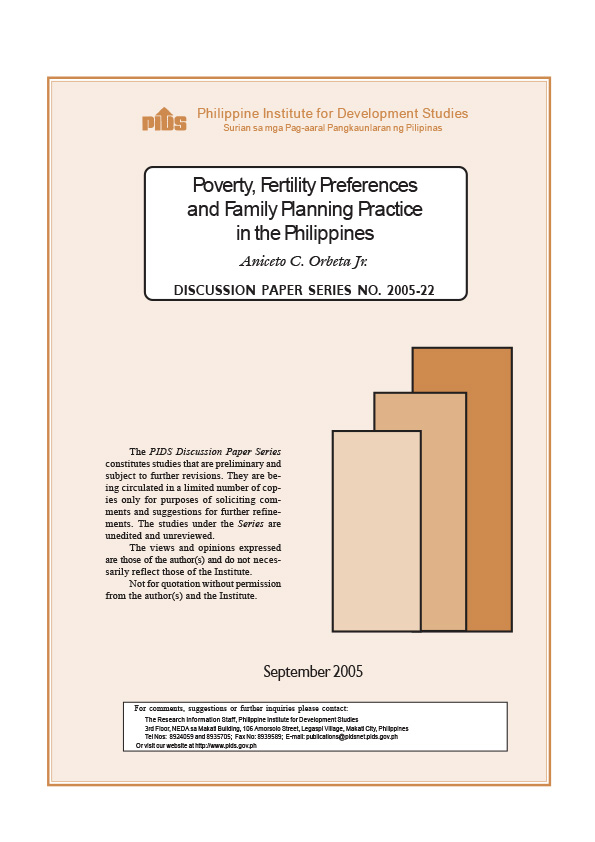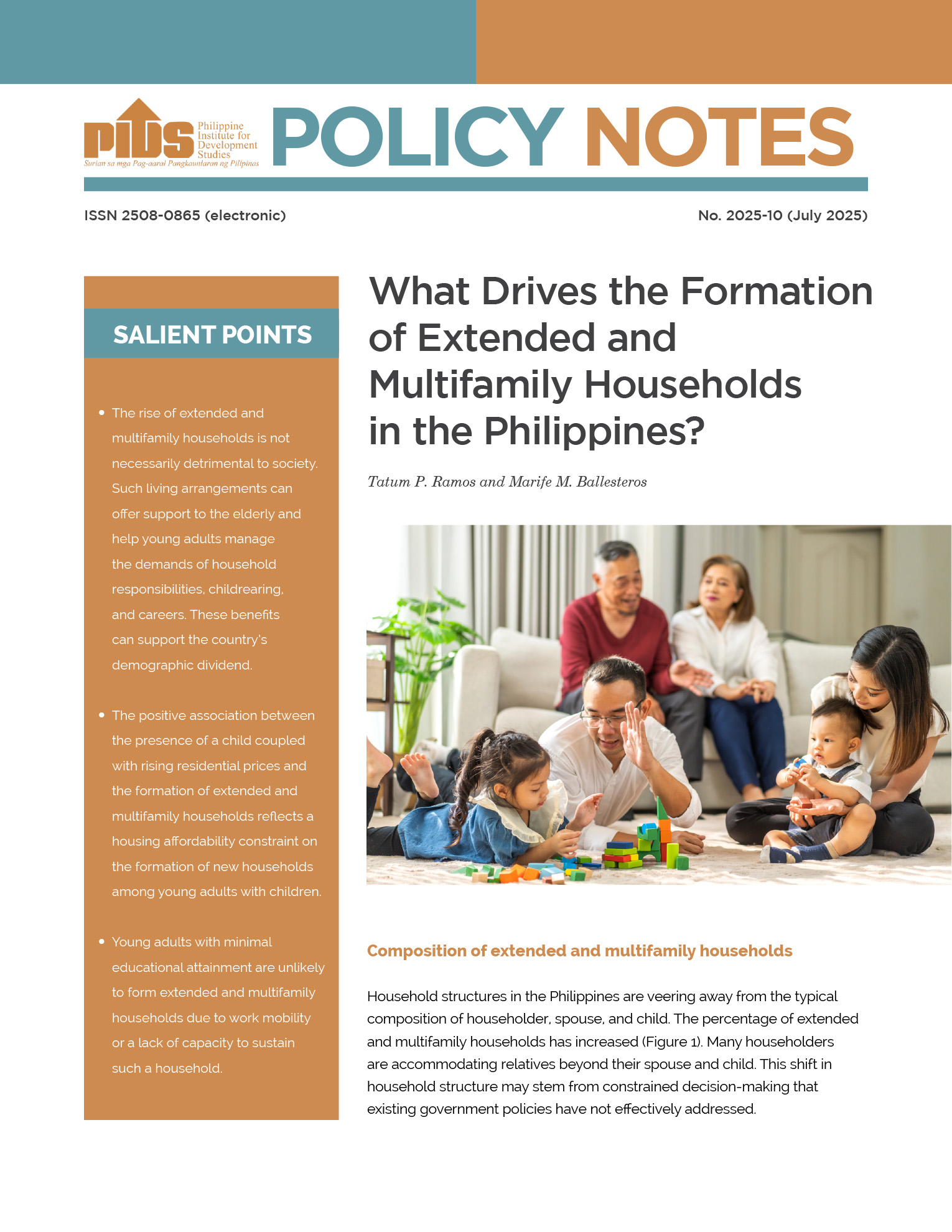This paper looks at the interaction of poverty, fertility preferences and family planning practice in the Philippines using the series of nationally representative Family Planning Surveys conducted annually since 1999 augmented by census and other survey data. Its contribution lies on providing recent and nationally representative empirical evidence on the long running but largely unresolved debate in the country on the relationship between fertility preferences and family planning and socioeconomic status. A detailed characterization of the relationships was done using cross tabulation analyses. In addition, and more importantly, a recursive qualitative response model was estimated to identify the determinants of fertility preferences and family planning practice across socioeconomic groupings. The paper show that while the number of children ever born is indeed larger among poorer households, their demand for additional children is lower and their contraceptive practice poorer. This result indicates that, in the case of the Philippines, the larger number of children among the poor is more the result of poorer contraceptive practice rather than higher demand.
Citations
This publication has been cited 5 times
- Dumas, Christelle and Arnaud Lefranc. 2013. “Sex in marriage is a divine gift”: For whom? Evidence from the Manila contraceptive ban. THEMA Working Papers 2013-22. THEMA (THéorie Economique, Modélisation et Applications), Université de Cergy-Pontoise.
- Dumas, Christelle and Arnaud Lefranc. 2016. “Sex in marriage is a divine gift”: For whom? Evidence from the Manila contraceptive ban. Post-Print hal-00867874. HAL.
- Dumas, Christelle and Arnaud Lefranc. 2013. “Sex in marriage is a divine gift”: For whom? Evidence from the Manila contraceptive ban. IZA Discussion Papers 7503. Institute of Labor Economics (IZA).
- Muhoza, Dieudonne Ndaruhuye. 2019. The heterogeneous effects of socioeconomic and cultural factors on fertility preferences: evidence from Rwanda and Kenya. Journal of Population Research, 36, No. 4, 347-363. Springer.
- Yaya, OlaOluwa and Olawale Osanyintupin. 2017. Determinants of desired and actual number of children and the risk of having more than two children in Ghana and Nigeria. MPRA Paper 88824. University Library of Munich, Germany.













